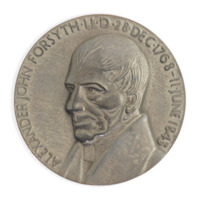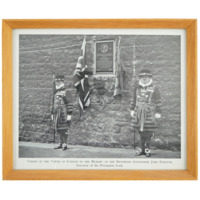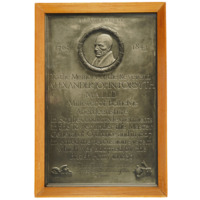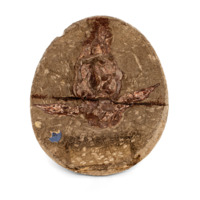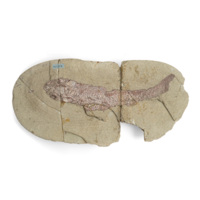F - Ferrier, David to fossil

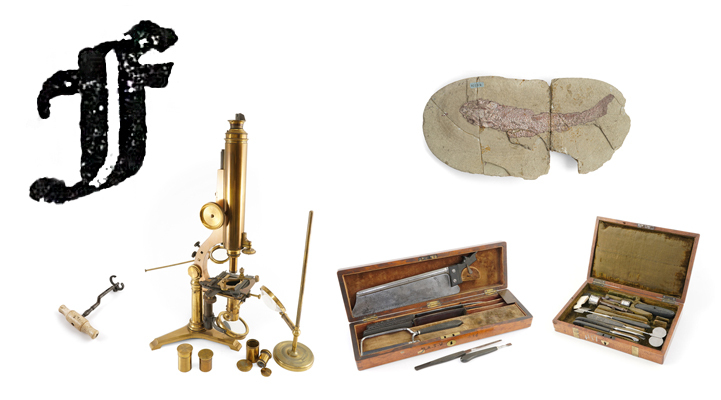

Ferrier, David
b 13 Jan 1843, Persley, Aberdeenshire, d 1928, London.
MA 1863 Aberdeen, MB 1868 Edinburgh, Prof of Neuropathology Kings College, London 1889-1908. Pioneer of clinical research into the functions of the brain. Knighthood 1911.
These researches mark the commencement of a new era in our knowledge of brain function. Of all the studies in comparative physiology there will be none more interesting, and few so important, as those which the various centres will be mapped...the various mental faculties will be assigned to definite territories of the brain...these investigations constitute the most important work...
William Rutherford 1874. Address to the Department of Anatomy & Physiology: British Association for the Advancement of Science report.
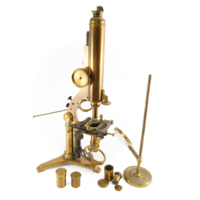
Microscope used by Ferrier on his research into neurological functions, (1870-1890).
ABDUA:36871
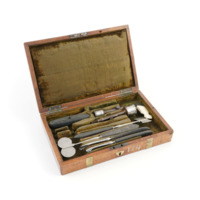
Trepanning kit, for gaining access inside the skull, used in the surgery department, University of Aberdeen (late 19th cent.)
ABDUA:64509
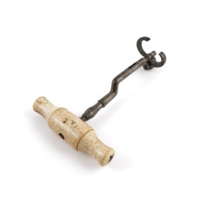
Dental key, used by surgeon barber for extraction, Aberdeen (early 19th cent.)
ABDUA:18375
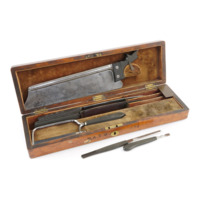
Amputation kit, used by Dyce Davidson 1876, Professor of Materia Medica at Aberdeen (1878-1886).
ABDUA:36872

Forsyth, Rev. Alexander John LID
b 28 December 1768 d 11 June 1843
The son of the minister of Belhelvie, a charge he held himself from 1790-1843. He is credited with establishing a savings bank, and with the introduction of smallpox vaccination to the North East. In 1807 he patented a percussion lock for fire-arms, which thirty years later the British army adopted.

fossil n
A relic or trace of a former living thing preserved in rock: an antiquated, out-of-date, or unchanging person or thing.
Between 375 and 390 million years ago (Middle Devonian period) the Moray Firth and its surrounding area was covered by a large lake fed by rivers flowing from the recently formed Caledonian mountains. At this time Britain was lying on the Tropic of Capricorn with a warm dry climate with occasional downpours. Around the edge of the lake there would have been a few plants (see Rhynie Chert) while in the lake shallows there lived various types of fish. Some of the bodies of these fish were preserved as fossils after sinking into the mud at the bottom of the lake.

